The Logic of Information: A Theory of Philosophy as Conceptual Design 1st Edition
Luciano Floridi
Visit to download the full and correct content document: https://ebookmass.com/product/the-logic-of-information-a-theory-of-philosophy-as-co nceptual-design-1st-edition-luciano-floridi/
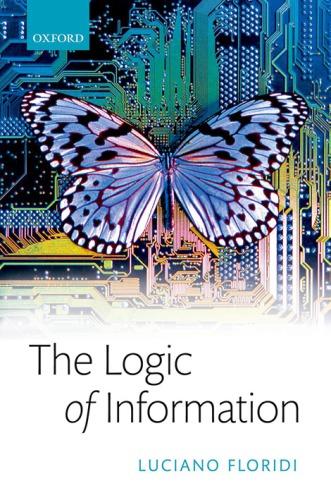
More products digital (pdf, epub, mobi) instant download maybe you interests ...
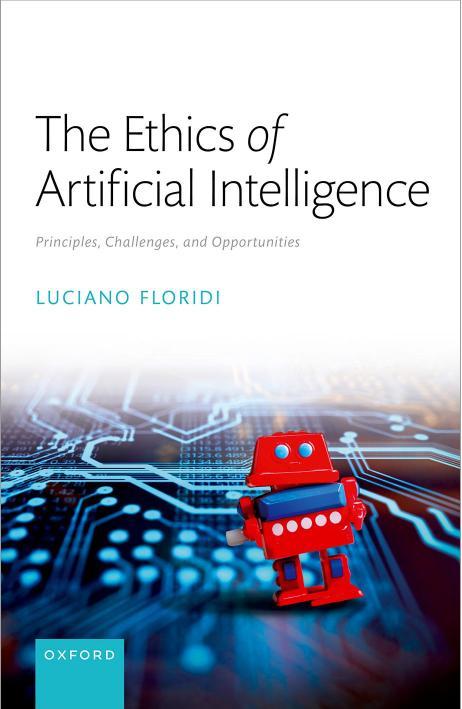
The Ethics of Artificial Intelligence_ Principles, Challenges, and Opportunities Prof Luciano Floridi
https://ebookmass.com/product/the-ethics-of-artificialintelligence_-principles-challenges-and-opportunities-profluciano-floridi/
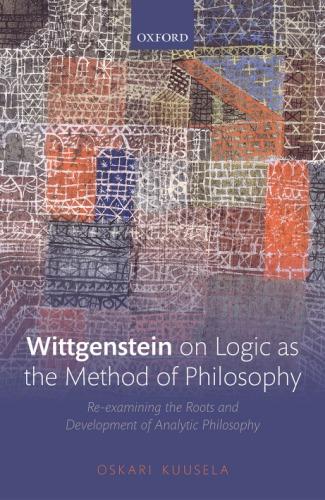
Wittgenstein On Logic As The Method Of Philosophy: ReExamining The Roots And Development Of Analytic Philosophy Oskari Kuusela
https://ebookmass.com/product/wittgenstein-on-logic-as-themethod-of-philosophy-re-examining-the-roots-and-development-ofanalytic-philosophy-oskari-kuusela/
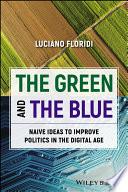
The Green and The Blue: Naive Ideas to Improve Politics in the Digital Age Luciano Floridi
https://ebookmass.com/product/the-green-and-the-blue-naive-ideasto-improve-politics-in-the-digital-age-luciano-floridi/
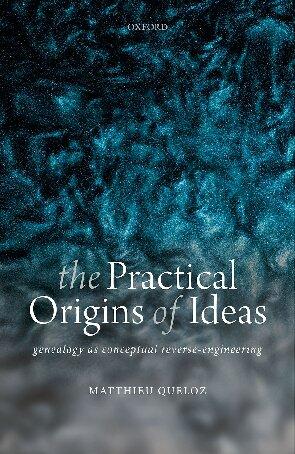
The Practical Origins of Ideas. Genealogy as Conceptual Reverse-Engineering Matthieu Queloz
https://ebookmass.com/product/the-practical-origins-of-ideasgenealogy-as-conceptual-reverse-engineering-matthieu-queloz/
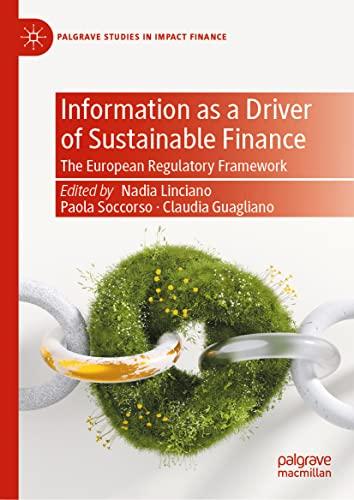
Information as a Driver of Sustainable Finance: The European Regulatory Framework Nadia Linciano
https://ebookmass.com/product/information-as-a-driver-ofsustainable-finance-the-european-regulatory-framework-nadialinciano/
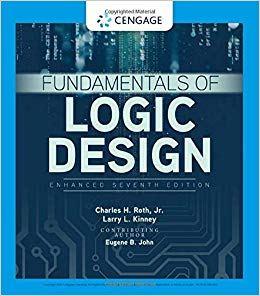
(eBook PDF) Fundamentals of Logic Design, Enhanced Edition 7th Edition
https://ebookmass.com/product/ebook-pdf-fundamentals-of-logicdesign-enhanced-edition-7th-edition/
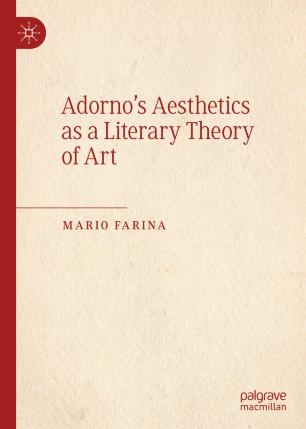
Adorno’s Aesthetics as a Literary Theory of Art 1st ed.
Edition Mario Farina
https://ebookmass.com/product/adornos-aesthetics-as-a-literarytheory-of-art-1st-ed-edition-mario-farina/
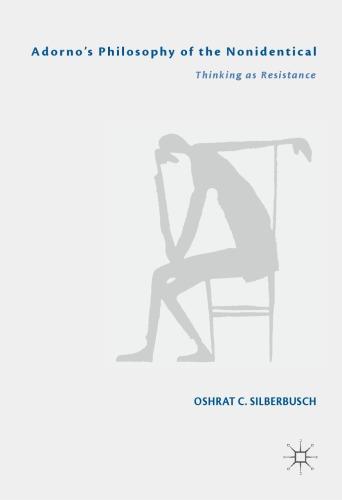
Adorno's philosophy of the nonidentical: thinking as resistance Adorno
https://ebookmass.com/product/adornos-philosophy-of-thenonidentical-thinking-as-resistance-adorno/

Fundamentals of Digital Logic with VHDL Design 4th
Edition Brown
https://ebookmass.com/product/fundamentals-of-digital-logic-withvhdl-design-4th-edition-brown/
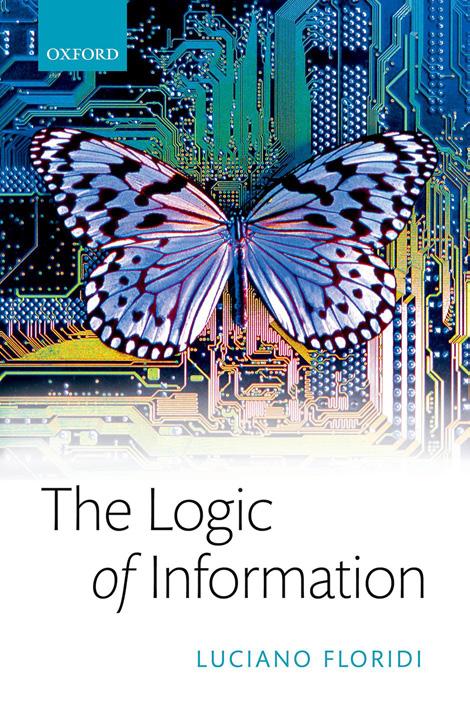
The Logic of Information
The Logic of Information
A Theory of Philosophy as Conceptual Design
Luciano Floridi
Great Clarendon Street, Oxford, OX2 6DP, United Kingdom
Oxford University Press is a department of the University of Oxford. It furthers the University’s objective of excellence in research, scholarship, and education by publishing worldwide. Oxford is a registered trade mark of Oxford University Press in the UK and in certain other countries
© Luciano Floridi 2019
The moral rights of the author have been asserted
First Edition published in 2019
Impression: 1
All rights reserved. No part of this publication may be reproduced, stored in a retrieval system, or transmitted, in any form or by any means, without the prior permission in writing of Oxford University Press, or as expressly permitted by law, by licence or under terms agreed with the appropriate reprographics rights organization. Enquiries concerning reproduction outside the scope of the above should be sent to the Rights Department, Oxford University Press, at the address above
You must not circulate this work in any other form and you must impose this same condition on any acquirer
Published in the United States of America by Oxford University Press 198 Madison Avenue, New York, NY 10016, United States of America
British Library Cataloguing in Publication Data
Data available
Library of Congress Control Number: 2018953774
ISBN 978–0–19–883363–5
Printed and bound by CPI Group (UK) Ltd, Croydon, CR0 4YY
Links to third party websites are provided by Oxford in good faith and for information only. Oxford disclaims any responsibility for the materials contained in any third party website referenced in this work.
Part I. Philosophy’s Open Questions
Part II. Philosophy as Conceptual Design
3.
4.
5.
6.
7.
Preface
The title of this book contains two words that are semantically very loaded, “logic” and “information”. Before I say anything about its contents, I better explain how I use each of them.
Consider “logic” first. Philosophy is often concerned with the study of structural properties of systems—whether empirical, like political organizations, or conceptual, like scientific theories—and their dynamics.1 Before the advent of modern mathematical logic, such structural studies might have been considered to be part of logic broadly understood.2 Today, this would be very misleading. But so would be the use of labels such as “informal logic”3 and “philosophical logic”,4 already appropriated by other branches of philosophy. Thus, for lack of a better expression, I have chosen to refer to such structural studies as “conceptual logic”. A conceptual logic is what we have in mind when we ask questions about the abstract properties, principles, mechanisms, or dynamics characterizing or underpinning systems like international relations, a bureaucracy, a scientific theory, or the internal arrangement of elements in a device to perform a specific task. A conceptual logic focuses on formal features that are independent of specific implementations or idiosyncratic contingencies, on types rather than tokens, on invariants and their mutual relations, and on state transitions that are generalizable. This is the sense in which “logic” should be understood in the title of this book.
Next, take “information”. What remains unclear in the previous explanation is exactly what further qualifies as a conceptual logic of a system. Later in this book, I shall use a more precise vocabulary and talk about the “model” (semantic information about) of a “system” (the referent “abouted” by some semantic information). This means that the overall question I address across this book, and hence its subtitle, can be phrased more precisely by asking: what is the conceptual logic of informationmodelling (i.e. generating a description of some structural properties of) a system? Note that, once unpacked, this question is not ontological but epistemological. It is not about the intrinsic, conceptual logic of a system in itself, but rather about the conceptual logic of the model (i.e. information) of a system, and how we design5 it. If this is
1 See Alexander (1964, p. 8).
2 For an enlightening reconstruction of the late modern developments of logic between Kant and Frege see Heis (2012).
3 See two excellent examples: Sinnott-Armstrong and Fogelin (2015), Walton and Brinton (2016).
4 See two excellent examples: Burgess (2009), Sainsbury (2001).
5 Parsons (2016) is a great source for a philosophical analysis of the debate on the concept of design. The book is also an essential starting point to frame the proposal made in this book. It dedicates quite some space to the debate on modernism. It is a must-read for anyone interested in understanding the conceptual nature of design together with the excellent Dunne and Raby (2013). These works, together with Barthes (1981) and Flusser (1999), have deeply influenced my views on the topic.
unclear, compare the conceptual logic of a watch’s mechanism with the conceptual logic of the design of a watch. The focus is really about a conceptual logic of the design of a system, understood as a specific kind of conceptual logic of information about (the design of the model of) a system; and not any kind of information, but that particular kind we call semantic or factual information, that is, information about something. Thus, “information” in the title of this book is not the sort of quantitative, probabilistic, signal-based concept that one may find in an engineering textbook (what is sometimes called Shannon information)—although I shall use that too in the following chapters— but the well-formed, meaningful, and truthful kind that one may find in a tourist guide about Rome.
Focusing on the logic of a model rather than on the logic of a system captured by a model means that this book is closely linked with some of the epistemological ideas I supported in a previous book, entitled The Philosophy of Information (Floridi 2011c). However, this is not a book in the epistemological tradition. It is rather a book on the logic of design and hence of making, transforming, refining, and improving the objects of our knowledge. So, it is not a book about ontology either, at least not in the classic sense. For some philosophers, it may be obvious that the conceptual logic of semantic information is the deep, conceptual logic of the world. Or, to put it in the vocabulary just introduced, that the logic of a model of a system is the logic of the system. In this, Hegel, Marx, the first Wittgenstein, and the atomistic Russell appear to share the same view. I am not so sure. Actually, I really doubt it, but, most importantly, this is not an issue that needs to be resolved here. We can all refrain from stepping into any ontological discussion, and phrase anything that we need to discuss epistemologically, and therefore more safely in terms of commitment. If, as a bonus, some readers may believe that we pay one and get two, as it were—that is, if anyone is convinced that by developing a conceptual logic of the model we shall also have obtained a conceptual logic of the corresponding system—I shall not complain, but neither shall I join them.
Putting the two clarifications together, this book is a study in the conceptual logic of semantic information. The next thing I should be candid about is that it is a constructionist study.
The scientific-realist reader should not be alarmed. If anything, this is a pragmatist book about a world that needs to be modelled correctly in order to be made meaningful satisfactorily. I never seriously question for a moment the recalcitrant and often grating presence of outside realities. Actually, I have little patience for self-indulgent and irresponsible speculations about logically possible situations involving brains in a vat, dreaming butterflies, or Matrix-like pills. In the best scenarios, they were once devised to help discuss valuable philosophical questions. They have now become scholastic puzzles that engage only professional academics.
At the same time, the naïve realist may rightly be a bit suspicious. Because the constructionism I develop in this book is still of a Kantian kind (more on Kant below). The starting point defended in this book, as in my previous works, is that we do not have access to the world in itself, something I am not even sure one can explain in full.
We always access any reality through specific interfaces, what I shall define in Chapter 2 as levels of abstraction, borrowing a conceptual framework from computer science. The world provides the data, to be understood as constraining affordances, and we transform them into information, like semantic engines. But such transformation or repurposing (see Chapter 4) is not equivalent to portraying, or picturing, or photographing, or photocopying anything. It is more like cooking: the dish does not represent the ingredients, it uses them to make something else out of them, yet the reality of the dish and its properties hugely depend on the reality and the properties of the ingredients. Models are not representations understood as pictures, but interpretations understood as data elaborations, of systems. Thus, the whole book may also be read as an articulation and defence of the thesis that knowledge is design, and that philosophy is the ultimate form of conceptual design.
There is one more clarification I should make. Shifting from representing to interpreting the world may be controversial. We shall see that it raises problems in terms of quality of the outcome (Chapter 5) and scepticism about its truthfulness (Chapters 6 and 7). But it is not new and it can easily be mistaken for something that I criticize throughout the book: a passive understanding of knowledge as being always about something already present in the world. This Platonic view, to be found also in Descartes, is too reductive. Modelling is not just dealing with what there is; it is often designing what there could, or should be. Having a different word helps here: a blueprint is a model of something that does not yet exist but that we want to design, not of something that is already there and that we want to explain, for example. So, this book is a constructionist study in the conceptual logic of semantic information both as a model (mimesis) and as a blueprint (poiesis). We have reached the full description. And this can now be used to contextualize this book within the wider project for the foundation of the philosophy of information.
This is the third volume in a tetralogy that includes The Philosophy of Information (volume one (Floridi 2011c)) and The Ethics of Information (volume two (Floridi 2013b)). I began labelling the tetralogy Principia Philosophiae Informationis not as a sign of bottomless hubris—although it may well be—but as an internal pun among some colleagues. In a sort of rowing-like competition, I joked that it was time for Oxford to catch up with Cambridge on the 3–0 scoring about “principia”. Not a pun that many find funny, or even intelligible.
Within the Principia project, this book occupies a middle ground between the first and the second volume. However, as the reader should expect, the three volumes are all written as stand-alone, so this book too can be read without any knowledge of anything else I have ever published. Yet the three volumes are complementary. The essential message from volume one is quite straightforward. Semantic information is well-formed, meaningful, and truthful data; knowledge is relevant semantic information properly accounted for; humans are the only known semantic engines and conscious informational organisms who can design and understand semantic artefacts, and thus develop a growing knowledge of reality; and reality is the totality of
information (notice the crucial absence of ‘semantic’). Against that background, volume two investigates the foundations of the ethics of informational organisms (inforgs) like us, which flourish in informational environments (infosphere), and are responsible for their construction and well-being. In short, volume two is about the ethics of inforgs in the infosphere. Thus, in a classic Kantian move, we are shifting from theoretical to pragmatic philosophy. I already mentioned that this third volume, insofar as it focuses on the conceptual logic of semantic information as a model, is linked with the epistemological analysis provided in The Philosophy of Information. And insofar as it focuses on the conceptual logic of semantic information as a blueprint, it offers a bridge towards the normative analysis provided in The Ethics of Information. This discusses, among other things, what duties, rights, and responsibilities are associated with the poietic practices that characterize our existence, from making sense of the world to changing it according to what we consider normatively right or morally good. By working like a hinge between the two previous books, this third one prepares the basis for volume four, on The Politics of Information. There, the epistemological, conceptual, and normative constructionism supports the study of the design opportunities we have in understanding and shaping what I like to call “the human project” in our information societies.
The three volumes may be understood as seeking to invert four misconceptions, easily explainable by using the classic communication model introduced by Shannon: sender, message, receiver, channel. Epistemology focuses too much on the passive receiver/consumer of knowledge, when it should be concerned with the active sender/ producer, because knowing is constructing. Ethics focuses too much on the sender/ agent, when it should be concerned with the receiver/patient, because the keys to being good are care, respect, and tolerance. Metaphysics focuses too much on the relata, the sender/producer/agent/receiver/consumer/patient, which it conceives as entities, when it should be concerned with the message/relations, because dynamic structures constitute the structured. And logic focuses too much on channels of communication as justifying or grounding our conclusions, when it should be concerned with channels that enable us to extract (and transfer) information from a variety of sources reliably, because the logic of information design is a logic of relata and clusters of relations, rather than a logic of things as bearers of predicates. I will be utterly amazed if even one of these u-turns in our philosophical paradigms will be successful.
Let me now turn to a quick overview of the contents. The task of this third volume is still that of contributing to the development of a philosophy of our time for our time, as I have written more than once. As in the previous two volumes, it does so systematically (conceptual architecture is pursued as a valuable feature of philosophical thinking) rather than exhaustively, by pursuing two goals.
The first goal is meta-theoretical and is fulfilled by Part I. This comprises the first three chapters. There, I offer an interpretation of philosophical questions as open questions (Chapter 1), of philosophy as the conceptual design of such questions and of their answers (Chapter 2), and of constructionism as the best way of approaching such a way of doing philosophy (Chapter 3).
On the basis of this first part, the second part pursues not a meta-theoretical but a theoretical investigation. In Chapter 4, I investigate how a constructionist philosophy as conceptual design can interpret perception and testimony as data providers. This leads to the discussion of two further issues: the quality of the information that we are able to elaborate on the basis of such data (Chapter 5); and the truthfulness of the information constructed, namely the sceptical challenge faced by a constructionist interpretation of semantic information, and its related modelling processes (Chapter 6). In Chapters 7 and 8 I return to the features of a constructionist logic to analyse the value of information closure for the consistency of our models of the world, and the possibility of expanding such models even through fallacious reasoning. In Chapter 9, I finally define what the maker’s knowledge could be, once we interpret ourselves as the designers responsible for our own understanding of the world. The book ends with a detailed analysis of what conceptual logic may underpin our designing activities, seen as depending on constraints and a relation of “a makes b a sufficient solution” (Chapter 10). The ten chapters are strictly related, so I have added internal references whenever it might be useful. They could be read in a slightly different order, as one of the anonymous referees pointed out. I agree. I offer here the structure that I find more helpful, but, for example, some readers may wish to go to the end of the story first, and learn about the logic of design as a conceptual logic of information before approaching any other chapter.
In terms of its philosophical roots, like volumes one and two, this too is a German book, written from a post-analytic continental-divide perspective, which I have the impression is increasingly fading away. The careful reader will easily place this work in the tradition linking pragmatism, especially Charles Sanders Peirce, with the philosophy of technology, especially Herbert Simon.6 Unlike volume one, and even more than volume two, this third volume is much less neo-Kantian than I expected it to be. And contrary to volume two, it is also less Platonic and Cartesian. In short, writing it has made me aware that I may be moving out of the shadows of my three philosophical heroes. Not a plan, but this is what happens when you follow your reasoning wherever it leads you. Amici Plato, Cartesius et Kant, sed magis amica veritas. In The Ethics of Information, I wrote that “some books write their authors”. I now have the impression that only bad books are fully controlled by their authors. They are called airport novels and telenovelas. Let me illustrate this with an anecdote.
One day, when I was a boy, my mother found me distressed because I had just read about the death of Porthos, one of the four musketeers, in Dumas’ The Man in the Iron Mask (1847–50, now (Dumas 2008)). There was not much she could do, but she tried to console me by pointing out that I was not alone. Dumas himself had been deeply upset by the death of his character. She recounted the story according to which a maiden had found Dumas crying because Porthos was dead. This seemed to me perfectly
6 The reader interested in exploring these connections may wish to consult Allo (2010) and Durante (2017).
reasonable. It was a very sad moment indeed. But what struck me at the time, and made me forget my sadness, was the alleged explanation that Dumas offered when asked why he, the omnipotent author, could not change the story of his own literary character. He said that Porthos had to die. That seemed to me to express, better than anything else I had experienced at the time, the force of a theorem, the strength of logical coherence, the inescapable, constraining grip of dynamic structures, which have features and interact in ways that are utterly independent of our wills and desires. You can choose the if, but not the then. Dumas was a great writer because he felt powerless. Porthos’ death was the inexorable conclusion, given the development of the plot. That evening I thanked my mother for the lesson in logical thinking, and felt a bit less upset: necessity is somewhat soothing. Many years later, I went to check the episode again. It still saddens me. But I found a line that seems very appropriate to conclude this anecdote. “ ‘Parbleu!’ said Porthos again, with laughter that he did not even attempt to restrain, ‘when a thing is explained to me I understand it; begone, and give me the light.’ ”
Regarding the style and structure of this book, as I wrote in the preface of volumes one and two, I remain painfully aware that this third volume too is not a page-turner, to put it mildly, despite my attempts to make it as interesting and reader-friendly as possible. I remain convinced that esoteric (in the technical sense) research in philosophy is the only way of developing new ideas. But exoteric philosophy has its crucial place. It is like the more accessible and relevant tip of the more obscure and yet necessary part of the iceberg under the surface of everyday life. The reader interested in a much lighter reading may wish to check The Fourth Revolution: How the Infosphere is Reshaping Human Reality (Floridi 2014a) or perhaps the even easier (Floridi 2010b).
This book will require not only graduate-level knowledge of philosophy, patience, and time but also an open mind. The last three are scarce resources. For in the last two decades or so of debates, I have been made fully aware—sometimes in ways less friendly than I wish—that some of the ideas I defend in the following pages are controversial. I have also seen how often mistakes are made by relying on “systemic attractors”: if a new idea looks a bit like an old idea we already have, then the old one is a magnet to which the new one is powerfully attracted, almost irresistibly. We end up thinking that “that new” is really just like “this old”, and if we do not like “this old” then we dislike “that new” as well. Bad philosophy indeed, but it takes mental strength and exercise to resist such a powerful shift. In the case of this book, I am sure some readers will be tempted to conclude that it is an anti-realist, anti-naturalist attempt to let the sceptic and the relativist have the final word about logic, knowledge, and science. So, let me say this as clearly as I can, quoting Margaret Thatcher: no, no, no. There are many ways of being anti-sceptic and anti-relativist, and being a realist constructionist is one of them. I actually believe that it is the best option we have today. The reader does not have to follow me that far. But no mistake should be made about the direction I am taking.
As in the previous two volumes, two features that I thought might help the reader to access the contents of this book more easily are the summaries and conclusions at the
beginning and at the end of each chapter, and some redundancy. Regarding the first feature, I know it is slightly unorthodox, but the solution, already adopted in volumes one and two, of starting each chapter with a ‘Previously in Chapter x ’, should enable the reader to browse the text, or fast-forward entire chapters of it, without losing the essential plot. Science-fiction fans, who recognize the reference to Battlestar Galactica, may consider this third volume as the equivalent of season three.
Regarding the second feature, while editing the final version of the book, I decided to leave in the chapters some repetitions and some rephrasing of recurrent themes, whenever I thought that the place where the original content had been introduced was too distant, either in terms of pages or in terms of theoretical context. If sometimes the reader experiences some déjà vu I hope it will be to the advantage of clarity, as a feature and not a bug.
A final word now on what the reader will not find in the following pages. This is not an introduction to formal logic from an informational perspective (a book that should be written) or to some modal logic of “S is informed that p”. Nor do I seek to provide an exhaustive investigation of all the issues that may go under the label of “logic of information”. In particular, I hope to work more extensively on testimony, epistemic luck, and causality in the future. They are a topic just touched upon in the following chapters. The book is not a textbook on information theory or on the sort of topics discussed in undergraduate courses entitled “Introduction to (library and) information science” either.7 The reader interested in such topics might wish to look at The Routledge Handbook of Philosophy of Information (Floridi 2016) or at Information—A Very Short Introduction (Floridi 2010b). This book is about the roots of some of the logical problems of our time, not their leaves. It is about design.
7 I discussed the relationship between the philosophy of information and library and information science in Floridi (2002a, 2004b).
Acknowledgements
After the experience of the first two volumes, I am bound to acknowledge here some of the things I already acknowledged there. The repetition does not diminish but reinforces my deep gratitude.
As before, I could not have worked on such a long-term project without dividing it into some feasible and much smaller tasks. Some of the earliest bits of this book date to 1999, although most of the work was done between 2011 and 2017. I am glad to see that so many different components still fitted together in the end. Of course, I hope this is the symptom of a well-planned project, but I am afraid that, the older I get, the more likely it is that it may actually be due to some mental resistance to change, also known as sclerosis. Old people do not change their minds easily.
As for the previous two volumes, many of the ideas and contents presented in the chapters were initially tested as conference presentations or (sometimes inclusive or) journal articles. The bibliographic details are in the list of references. This systematic and gradual way of working is laborious, but it seems to be fruitful and it may also be inevitable, given the innovative nature of the field. It does require a perseverance and commitment that I hope are not ill-exercised. I wished to assess the ideas presented in this volume as thoroughly as possible, and publishing the articles gave me the opportunity and privilege to enjoy a vast amount of feedback, from a very large number of excellent colleagues and anonymous referees. If I do not thank all of them here, this is not for lack of manners or mere reason of space, but because the appropriate acknowledgements can be found in the corresponding, published articles.
There are, however, some people I would like to mention explicitly because they played a significant role throughout the project and during the revisions of the final text. Kia first of all. She and I have been married for as long as I have been working on the whole Principia project. Without her, I would have never had the confidence to undertake such a task, and the spiritual energy to complete it. It requires a huge amount of serenity to invest so much time in philosophical thinking, and Kia is my muse. I am repeating something I already wrote in the previous volume: she keeps making our life blissful, and I am very grateful to her for the endless hours we spend talking about the topics of the Principia, for all her sharp suggestions, and for her lovely patience with an utterly obsessed, single-minded, overly focused husband, who must be unbearable to anyone else. I wish I could claim to have contributed to her research in neuroscience even half as much as she has to my philosophical development. Between the second and this third volume we moved into the house of our dreams. Mill Barn is the perfect place to think.
Patrick Allo, Selmer Bringsjord, Min Chen, Marcello D’Agostino, Massimo Durante, Giuseppe Primiero, Sebastian Sequoiah-Grayson, Ugo Pagallo, Mariarosaria Taddeo,
David Watson, and James Williams, as well as several members and visitors of the Digital Ethics Lab at Oxford during the past years, were very generous with their time and provided numerous opportunities for discussion and further reflection on the topics analysed in this book.
A very long list of meetings, conferences, and workshops (the details are in the published articles listed in the References section) provided stimulating and fruitful venues to elaborate and further test some of the ideas presented in this book. I have learnt a lot from the colleagues I met there, though I wish I had been able to learn more.
Peter Momtchiloff was pivotal for the realization of all three volumes, both because of his foresighted invitation to publish them with OUP, and because of his support and firm patience, when it seemed that I would never complete them.
The anonymous reviewers appointed by OUP were incredibly helpful with their comments and suggestions. I was impressed especially by one of them for her or his careful reading and very insightful recommendations. I wish I could thank her or him in person.
Jessica Antonio and Louise Parker, my personal assistants at different times, provided the exceptional support and impeccable managerial skills without which I could not have completed this project.
I would also like to thank all the people who made the task of working on this book more difficult than it should have been. Sometimes friction is essential to make progress.
Finally, this book was made possible by the very generous and friendly support of the Universidad Carlos III de Madrid, where I spent a fruitful and quiet period of research as the 2015 Chair of Excellence, thanks also to the support of the Santander programme. The colleagues at Carlos III, and especially Ilia Galan Diez, provided the best intellectual and social environment to develop some of the ideas presented in the following pages. I am immensely grateful for the privilege. The book is dedicated to them.
List of Most Common Acronyms
A agent, Alice
B agent, Bob
C agent, Carol
ICTs Information and Communication Technologies
LoA Level of Abstraction
PI Philosophy of Information
The use of Alice as synonymous with Agent is not merely an Oxford-related reference. The reader acquainted with the literature on quantum information will recognize in Alice, Bob, Carol, and Dave the more memorable and concrete placeholder names for otherwise abstract agents or particles; see http://en.wikipedia.org/wiki/Alice_and_ Bob, retrieved January 2018.
3. Ngram of ‘epistemology naturalized’; case-insensitive; year-range = 1800–2008; Corpus =
4. Ngram of ‘naturalization’; case-insensitive; year-range = 1800–2008; Corpus = Google
5.
6.
22.
24.
25.
28.
34.
35.
PART I Philosophy’s Open Questions
Advanced research develops at an ever-faster pace, so it is becoming increasingly hard to anticipate its future. This holds true in any field of investigation, including philosophy, where the scope and varied nature of the discipline make forecasting its development perhaps an even more challenging task. At the same time, there seems to be a growing demand for philosophical understanding, in a world in which conceptual problems, ethical issues, social and political tensions, economic imbalances, religious and cultural clashes, international conflicts, and environmental challenges have acquired global dimensions and visibly affect the lives of billions of people simultaneously. The world needs more philosophical insights and more ideas on how to cope with a complex future. It needs conceptual theorizing and philosophical answers. Therefore, it is simply irresponsible to dismiss philosophy as a useless waste of time, with cheap jokes, populistic rhetoric, and unscientific remarks, as Stephen Hawking (more on him in Chapter 1), Neil deGrasse Tyson, or Bill Nye have done. True, philosophy has its ups and downs, as I shall argue in Chapter 1, but so have other disciplines, and it is essential that we should try to identify the most promising lines of philosophical research, and anticipate trends in which it might be worth investing our intellectual efforts and dwindling resources. What kind of philosophy are we developing? And what kind of philosophy should we be fostering? These are difficult questions. They also represent a classic leitmotif in the history of philosophy, because no serious philosophy worth pursuing shies away from the reflection on its own status. It comes with the job, as they say. They are also questions that should be asked preferably to (I did not write by) experts.1 The main
1 They have been; see for example Schlette (1968), Leaman (1998), Bencivenga (2006), Dietrich and Weber (2011), and Floridi (2013a). In the latter case, I sought to collect views from philosophers who are also editors in chief of influential philosophical journals and philosophy editors of important publishing houses. They may contribute particularly helpful perspectives on the future of philosophical research because they enjoy a privileged role with respect to its current state. Not only are they likely to have a better sense of what is the most promising work in progress, and what kind of fruitful patterns might be emerging, as the journals’ long backlogs of forthcoming articles and publishers’ long-term editorial plans clearly suggest. They are also the ones who may have an overall perspective about what is not published, and for what reasons. As in the case of negative results, this too is valuable information. According to a widely cited piece of research, (Fanelli 2012), every year there is a 6 per cent decrease in the publication number of scientific papers with negative results. It would be interesting to compare this situation to philosophical journals.
questions to address are inevitably indexical: what now, what next, what for. The strategy is always, to quote Schlick:2
to ask the question, ‘What will be the future of philosophy?’ entirely from the point of view of the philosopher. However, to answer the question we shall have to use the method of the historian because we shall not be able to say what the future of philosophy will be except in so far as our conclusions are derived from our knowledge of its past and its present.
Inevitably, readers of this book will have their own answers. In this first part of the book, I present my own. I hope they are convincing, but even if they are not, they should be helpful in understanding how I approach the philosophical questions discussed in the second part.
For in the best scenarios, when new research topics begin to emerge, it is conceivable that attempts at studying them might initially be unsuccessful, and yet, the presence of such failures may still betray the importance of the topic itself. Finally, editorial strategies and choices also contribute to shaping the future of the discipline, so editors seem to be well positioned to discuss the future of philosophical research.
2 Schlick (1932), republished in Schlick (1979).
1
What is a Philosophical Question?
Summary
There are many ways of understanding the nature of philosophical questions. One may consider their morphology, semantics, relevance, or scope. This chapter introduces a different approach, based on the kind of informational resources required to answer them. The result is a definition of philosophical questions as questions whose answers are in principle open to informed, rational, and honest disagreement, ultimate but not absolute, closed under further questioning, possibly constrained by empirical and logico-mathematical resources, but requiring noetic resources to be answered. The chapter concludes with a discussion of some of the consequences of this definition for a conception of philosophy as the study (or ‘science’) of open questions, which uses conceptual design to analyse and answer them. That is the topic of Chapter 2.
1. Introduction: Russell’s ‘such ultimate questions’
In 1912, Russell published The Problems of Philosophy (Russell 1912). A hundred years later, it is still a classic introduction to philosophy, accessible to beginners and insightful for experts. As the reader probably knows, it is a tiny book. In such a short space, Russell explicitly chooses to privilege epistemological problems over metaphysical ones. As he writes in the preface:
In the following pages, I have confined myself in the main to those problems of philosophy in regard to which I thought it possible to say something positive and constructive, since merely negative criticism seemed out of place. For this reason, theory of knowledge occupies a larger space than metaphysics in the present volume, and some topics much discussed by philosophers are treated very briefly, if at all. (Russell 1912, p. 1)
Such an epistemological orientation makes the book especially suitable for an informational interpretation, as the analysis of the problem of sense data shows, for example. Yet, in this chapter, I do not wish to engage with Russell’s selection of philosophical questions, with his own formulation of them, or even with the answers he advocates. Instead, I intend to concentrate on only one paragraph. It is the first of the book, and
the following pages may be read, in a Whiteheadian sense (Whitehead 1978, p. 39), as a long footnote to it:
Is there any knowledge in the world which is so certain that no reasonable man could doubt it? This question, which at first sight might not seem difficult, is really one of the most difficult that can be asked. When we have realized the obstacles in the way of a straightforward and confident answer, we shall be well launched on the study of philosophy—for philosophy is merely the attempt to answer such ultimate questions [my italics], not carelessly and dogmatically, as we do in ordinary life and even in the sciences, but critically, after exploring all that makes such questions puzzling, and after realizing all the vagueness and confusion that underlie our ordinary ideas. (Russell 1912, p. 1)
What I intend to present is an interpretation of ‘such’, ‘ultimate’, and ‘questions’ and some of its consequences for the conception of philosophy that I shall defend in the rest of the book. Before I do so, let me remove three sources of potential confusion.
First, I shall follow Russell in not distinguishing between philosophical problems, which he mentions in the preface, and philosophical questions, which he mentions in the first paragraph. I shall assume that the latter are mere linguistic expressions of the former, that this holds true also for the distinction between philosophical solutions and philosophical answers, and hence that the two couples of concepts can safely be used interchangeably. This is less trivial than it may seem because there is a significant difference between heuristics, understood as the method of problem solving (Pearl 1984), and erotetics, that is, the logic of questions and answers (Belnap and Steel 1976).
Second, when talking about philosophical questions and answers, I shall not presuppose them to be equivalent to philosophers’ questions and answers. I take the latter to be degenerate cases of the former, to borrow a technical term3 from mathematics that I will fully discuss at the end of Chapter 2.4 They can be criticized as expressions of mere scholasticism.5
Third, I agree with Russell that the task of philosophy is twofold: the analysis of questions must precede, but then should also be followed by, the synthesis of answers. A philosophy without clear questions is sterile, but without convincing answers it is an abortion.
2. The Variety of Questions
There are many interesting ways of analysing questions. Some of them easily lend themselves to a metaphilosophical application. In particular, one may begin by concentrating on their morphology, and describe philosophical questions as definitional (‘wh- . . .’ kind of questions) or existential (as in ‘existential quantifier’, not as in Sartre). Textbook examples include: what is truth? What should I do? Why do we behave
3 From a similar perspective, one may argue that War and Peace is a transcendental novel: http://www. salon.com/2015/01/11/leo_tolstoys_theory_of_everything.
4 See also Floridi (2012a). 5 As done in Dennett (2006), Floridi (2011c).
altruistically? Who am I? Is there a God? Can there be justice? And because of the classic ‘ti esti . . .’ (‘what is . . .’) format, one may hold that philosophical questions are therefore Socratic questions. In a well-known article, Uygur suggested as much:
My main object is to scrutinize the typical structure of a genuine philosophical question without regard to the stage of research it might animate. My chief concern is to describe only the salient characteristics of a philosophical question. I see my task in showing what is contained in such a question; I want to throw light on what is asked in it, trying to point out, as correctly as I can, the basic form of a question proper to philosophy. (Uygur 1964, p. 65)
This is a good start, but it does raise a difficulty: the philosophical specificity of Socratic questions soon appears to lie in their topics rather than in their morphology. Because one may object that it is because Socratic questions are about truth, duty, altruism, personal identity, God, or justice that they are philosophical. If so, their philosophical specificity would be primarily a matter of reference: their morphology would be a mere means to a more important end, that of unveiling the problematicity of their conceptual targets. I suppose one could imagine a language in which all wh- and existential questions can only be expressed as propositional wants or needs (e.g. ‘I need to know that p’ or ‘I must know whether p’) and still fully maintain the philosophical nature of such wants and needs. So perhaps this is correct. Maybe there are intrinsically philosophical contents (sense) or topics (reference) from which relevant questions inherit a corresponding philosophical value, like moons illuminated by their suns. But even this cannot be the whole story. There is still at least one important aspect missing. Even with the right morphology and semantic features, Socratic questions may start from, but are not about, this particular empirical truth, or that idiosyncratic act of altruism. Moreover, in philosophy we do not seek to know whether there is a God or there can be justice in the fantasy world of Tolkien’s Lord of the Rings. Therefore, scope and relevance are also important. For this reason, we also tend to qualify Socratic questions as abstract, universal, sometimes timeless,6 and as important for us, our lives, choices, practical and intellectual pursuits, preferences, and moral behaviours. I am not sure this will not do. Russell seems to have thought that it did. As we shall see in section 7, this is why, I take it, he spoke of philosophical questions as ‘ultimate questions’. Indeed, a careful mixture of morphology, semantics, scope, and relevance has served the philosophical profession well for a long time. So, far be it from me to criticize it. What I would like to suggest is that there is another approach, compatible with the Socratic interpretation outlined above, which can help to clarify further what philosophical questions are and cannot be today. The chronological clause is important. Russell could not have been acquainted with the approach that I wish to advocate, because the latter
6 Schlick (1932) already had some very convincing arguments against interpreting philosophy as the science of the general or a super-science. Yet his arguments seem to have gone unheard: see, for example, Dewey (1956) or Schlette (1968), two cases in which such an interpretation is still quite popular (it is also discussed in Glaeser (1969), rather approvingly), and what Dummett (2010) suggests about Quine and the naturalization project.
is based on a simple but ground-breaking lesson we have learned from studies in computational complexity since the 1960s: a lesson that had its roots in the work of Alan Turing (Fortnow and Homer 2003), who was born the same year Russell published his book. It seems that 1912 was some kind of accidental threshold.
3. A Resource-oriented Approach to the Nature of Questions
To understand the approach to the nature of philosophical questions that I intend to advocate, we need to take a step back.
Turing gave us a clear analysis of what an algorithm is. This is crucial in order to shift our perspective on the nature of computational problems, because having a standard way of formulating algorithms means having a universal parameter to calculate the complexity of the problems that such algorithms are supposed to solve. Thus, a Turing Machine works a bit like the standard metre in Paris. The result, a few decades after Turing’s ground-breaking research, is that, in computational theory, one investigates the nature of problems by looking at their complexity, understood as the degree of difficulty of solving them, by studying the resources required to solve them.7 This means that one does not focus on the specific morphology of the problems—because this is where having a universal model, such as a Turing machine, helps us not to be side-tracked—on their semantic features—because we are interested in whole classes of problems independently of their specific content and topic—or on their scope and relevance—because we are interested in their complexity, independently of their timeless applicability. Rather, one investigates the complexity of computational problems by studying the quantity and quality of resources it would take to solve them. This usually means considering the amount of time (number of steps) or space (quantity of memory) required. In this way, it becomes possible to study classes of problems that share the same degree of complexity, and to structure such classes in hierarchies of different degrees of complexity.
The importance of such a shift in perspective may be easily conveyed by means of a simple analogy. When studying animals, one may concentrate on their morphology (e.g. quadruped), or reproductive method (e.g. oviparous), or indeed many other features, such as their habitat (e.g. palustre, or swamp animal). Or one may consider what it takes it to keep an animal alive. According to this diet-oriented approach, a class of animals could be catalogued as frugivore, or fruit eater, for example. This is more or less what happens in computational theory: classes of computational problems are organized in terms of their complexity understood as the kind of resources they (would) consume in order to be solved.
7 An excellent introduction is provided by Sipser (2012). I have provided a simple and philosophically oriented outline of computational complexity in Floridi (1999).
The previous analogy should help to clarify the resource-oriented approach adopted below: we can study questions by considering the resources required by their answers. It should also dispel any concern about the strategy I shall follow. It is not my intention to try the impossible, that is, to classify and study philosophical problems on the basis of their computational complexity. On the contrary, later in the chapter it will become obvious that this should be considered an outdated, Leibnizian dream. In philosophy, there are no experiments and no calculations, for reasons that will soon be obvious. What I wish to borrow, from computational complexity theory, is only the simple, yet very powerful, insight that the nature of problems may be fruitfully studied by focusing on what it may take in principle to solve them, rather than on their form, meaning, reference, scope, and relevance.
Equipped with this new conceptual tool and a different approach, let us now return to our initial attempt to clarify what a philosophical question is.
4. Three Kinds of Question
Questions may be of many kinds;8 think of Socrates’ rhetorical questions, for example, or his testing questions. And therefore they may serve a variety of purposes; for example, implicitly asserting that p, or explicitly checking whether Alice knows that p. However, it seems clear that, in this context (recall Russell’s book), we are discussing questions as genuine requests for information9 or queries: we are looking for an answer we do not have but would like to obtain.10 It follows that, from a resource-oriented approach, and simplifying a bit,11 we may distinguish between different kinds of questions as queries (henceforth I shall drop this qualification), depending on what kind of information it would take to answer them.
Obviously, some questions require empirical information to be answered, as when Alice asks Bob who is coming to their party on Saturday, and whether any guest is vegetarian. Equally obviously, some other questions require logico-mathematical information to be answered,12 as when Alice asks Bob how many people might be coming
8 Analyses abound. In connection with the nature of philosophical questions, Cohen (1929) already provided a clear analysis of the other senses that I disregard in this chapter, and further bibliographical references.
9 “The question has usually been described as a request for information” (Cohen 1929); see also Llewelyn (1964) for an analysis of questions as ways to elicit information—what I have called queries.
10 The proposal in Cohen (1929)—critically discussed by Llewelyn (1964), but see also Carnap, C. I. Lewis, Reichenbach, Ryle, Hamblin, and Presley—to construe questions as propositional functions is perfectly compatible with the theses defended in this chapter, but its adoption would merely burden the text with an unnecessary complication.
11 I am simplifying here because, of course, hybrid cases are very common, combining features of more than one class (hence my use of the inclusive “or” in the text), but this refinement only makes things more obscure without helping to make the point any more convincing, so I shall rely on the reader’s intelligence.
12 Whether logico-mathematical resources may be defined as logico-mathematical information is a difficult issue because the informational nature of logic and hence mathematics is problematic; see Hintikka’s “scandal of deduction” (Hintikka 1973). I shall not discuss this issue here. For a full discussion and a constructive proposal see D’Agostino and Floridi (2009).
